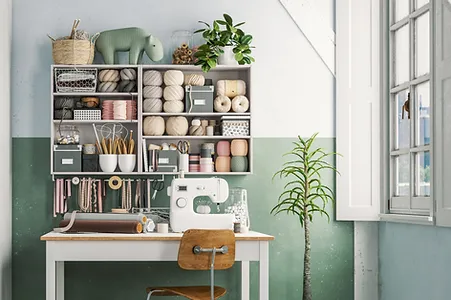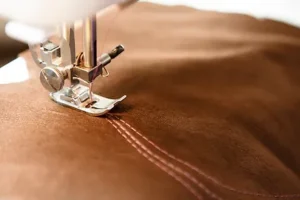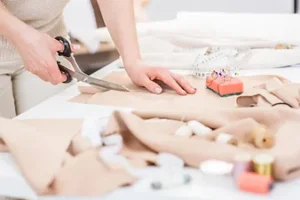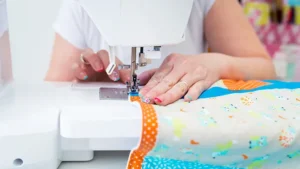A sewing room is a haven for creative minds and crafty hands. But, if your sewing room is more chaos than creativity, it might be time for a makeover. Organizing your sewing space
not only increases efficiency but also enhances your sewing experience. In this blog, we’ll explore some practical tips and creative ideas to help you transform your sewing room from cluttered chaos to a well-organized and inspiring workspace.
1. Assess Your Space:
Before diving into organization, assess your sewing room. Take note of its size, layout, and any existing storage solutions. Understanding your space’s limitations and possibilities will help you plan effectively.

2. Declutter and Sort:
Start your sewing room transformation by decluttering. Go through your fabrics, patterns, notions, and equipment. Keep what you love and use, and consider donating or selling items you no longer need. Sorting your materials into categories will make organization easier.
3. Functional Layout:
Consider the layout of your sewing room. Place your sewing machine and cutting table in convenient locations with good lighting. Create separate zones for different tasks, such as a cutting area, sewing station, and storage space for fabrics and notions.
4. Storage Solutions:
Invest in storage solutions that fit your needs and space:
a. Shelving Units: Open shelves are great for storing fabric bolts, books, and containers of notions. You can also add decorative baskets for a stylish touch.
b. Pegboards: Install pegboards on the wall to hang scissors, rulers, and other small tools. Pegboards help keep your essentials within reach while saving space.
c. Clear Containers: Use transparent bins or containers to store smaller sewing supplies like buttons, zippers, and thread spools. Label them for easy identification.
d. Drawer Dividers: In your sewing machine cabinet or storage units, use drawer dividers to keep sewing tools, accessories, and patterns organized and accessible.
5. Thread and Notion Storage:
For threads, consider a thread rack or a thread organizer that allows you to see all your thread colors at a glance. Magnetic strips on the wall can hold metal notions like bobbins and scissors.
6. Fabric Organization:
Fabric storage can be a challenge. Consider these options:
a. Bolts or Shelves: If you have space, storing fabric bolts upright on shelves can keep them visible and accessible.
b. Fabric Bins: Use fabric bins or clear plastic containers to store smaller cuts of fabric. Sort them by color or project.
c. Rolling Carts: Mobile rolling carts are versatile for storing fabric and can be moved around as needed.

7. Labeling:
Labeling is essential for staying organized. Label your containers, drawers, and shelves, so you always know where to find what you need.
8. Inspiring Decor:
Enhance your sewing room’s atmosphere with inspiring decor. Hang up your finished projects or display vintage sewing machines and tools as art pieces. Personalize your space to make it truly your own.
9. Maintenance Routine:
To maintain your organized sewing room, establish a cleaning and maintenance routine. Dedicate a few minutes after each sewing session to tidy up and put things back in their designated spots.
10. Inspiration Board:
Create an inspiration board or wall where you can pin fabric swatches, project ideas, and sketches. Having a visual reference for your creative projects can be motivating.
An organized sewing room is a space where creativity can flourish. With thoughtful planning, suitable storage solutions, and a bit of decluttering, you can transform your sewing room into an inspiring and efficient workspace. So, start decluttering and organizing today, and watch your sewing room become a place where your creative dreams come to life!




